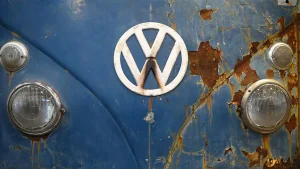What is the Perfect Drinking Temperature for Beer
It’s a sweltering summer afternoon, and you reach into the cooler to grab an icy cold beer. As you take that first sip, the crisp, refreshing taste seems to wash away the heat. Have you ever wondered why certain alcoholic beverages taste better when served at specific temperatures? A recent study published in the journal MATTER holds the answers.
To start with the conclusion, Chinese baijiu, or ethanol solutions with concentrations of 38% to 42% and 52% to 53%, are best enjoyed at around 40°C. Heating them to higher temperatures can diminish the differences in flavor between different types of baijiu.
As for beer, or ethanol solutions with concentrations of 5% and 11%, the optimal tasting temperature is 5°C. In other words, beer enthusiasts can precisely adjust the temperature of their refrigerators.
 Drinking Scenes in the Movie “Titanic”
Drinking Scenes in the Movie “Titanic”
Researchers from the Chinese Academy of Sciences have delved into the fascinating world of ethanol-water mixtures—important components in beer, wine, spirits, and other cocktails. They’ve discovered how these mixtures behave differently depending on the temperature and what surfaces they come into contact with.
One of the most interesting findings is how ethanol-water mixtures interact with hydrophobic (water-repelling) surfaces. These interactions can be compared to how a drop of water behaves on a waxed car hood—it beads up rather than spreading out.
The study notes that temperature plays a crucial role in determining the structure of ethanol-water clusters. Consider the difference between that chilled beer and a glass of warmed Chinese baijiu, a traditional spirit. Cooling and heating alcoholic drinks alter the molecular arrangement of these clusters, which in turn affects how the beverages taste.
For example, low-alcohol beers and white wines are typically enjoyed cold because cooling brings out their subtle flavors by making the molecular clusters more “ethanol-like.” On the other hand, strong spirits like baijiu are often warmed to enhance their robust flavors.
The researchers found stepwise changes in surface tension when ethanol-water mixtures were placed on a particular type of graphite. Surface tension affects how liquids bead up or spread out, much like how dew forms droplets on a leaf. Surprisingly, these steps in surface tension match the alcohol by volume (ABV) percentages common in popular drinks like beer, wine, and spirits.


Using advanced tools like proton nuclear magnetic resonance (NMR) and molecular dynamics simulations, the researchers confirmed the presence of various ethanol-water molecular clusters at different concentrations. These clusters behave like sugar dissolving in tea: as more sugar is added, the structure of the solution changes, affecting its taste and texture.
This new understanding helps explain why our ancestors devised certain methods to test the alcohol content of beverages, such as the drink’s ability to ignite or its resistance to freezing. For centuries, people have also optimized the drinking temperatures for various kinds of alcohol based on experience.
The study not only offers insights into your everyday drinking experience but also has significant implications for the beverage industry. Better understanding of ethanol and water interactions at the molecular level could lead to innovations in brewing, distillation, and even the creation of new types of drinks. Imagine a future where your favorite beverage is perfectly crafted to enhance every sip—thanks to science!
So, the next time you enjoy a glass of wine or a cold beer, you’ll know that there’s a fascinating molecular dance happening, influencing every drop you taste.
Xiaotao Yang, Jia Zheng, Xianfeng Luo, Hongyan Xiao, Peijia Li, Xiaodong Luo, Ye Tian, Lei Jiang, Dong Zhao,Ethanol-water clusters determine the critical concentration of alcoholic beverages, Matter, Volume 7, Issue 5, 2024



